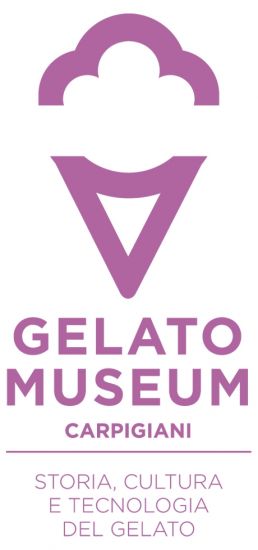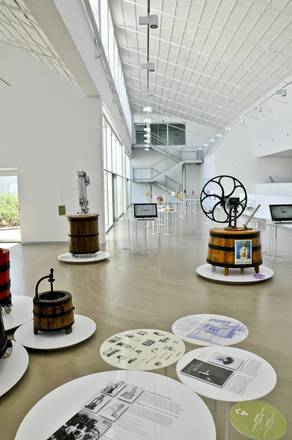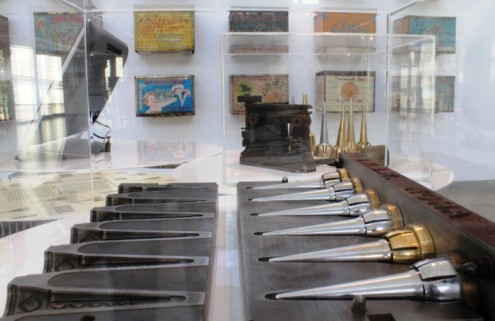The Gelato Museum: I think a second visit is in order...
Ok, I’ll admit it; this post is probably less "best-practice" oriented than our typical Technology in the Arts publications. However, I guar antee it is more delicious, if that is of any consolation. Before heading to Bologna for the year, I crafted my list of “Must See and Do’s,” including both touristy and off-the-beaten track attractions. Occupying one of the top spots on my list (let’s just say it was either 1 or 2…) was the Gelato Museum Carpigiani. Yes, you read that correctly, a museum dedicated entirely to the history, culture and technology of gelato and gelato-making. Bliss.
It is a brand new museum, opening three weeks ago just outside the center of Bologna in Anzola dell’Emilia. Carpigiani is a brand, one of the leading producers of gelato-making equipment (actually, two gentlemen on the tour, also American, use Carpigiani machines in their gelateria in Colorado). The company also founded the Gelato University, based in Bologna but with satellite campuses around the world (Argentina, Germany, Japan, Italy, Netherlands, China, USA, Scotland, and England). Students interested in learning the artisan craft of gelato making and managing a gelateria can enroll in a variety of courses. Have I already looked into the details? You betcha.
antee it is more delicious, if that is of any consolation. Before heading to Bologna for the year, I crafted my list of “Must See and Do’s,” including both touristy and off-the-beaten track attractions. Occupying one of the top spots on my list (let’s just say it was either 1 or 2…) was the Gelato Museum Carpigiani. Yes, you read that correctly, a museum dedicated entirely to the history, culture and technology of gelato and gelato-making. Bliss.
It is a brand new museum, opening three weeks ago just outside the center of Bologna in Anzola dell’Emilia. Carpigiani is a brand, one of the leading producers of gelato-making equipment (actually, two gentlemen on the tour, also American, use Carpigiani machines in their gelateria in Colorado). The company also founded the Gelato University, based in Bologna but with satellite campuses around the world (Argentina, Germany, Japan, Italy, Netherlands, China, USA, Scotland, and England). Students interested in learning the artisan craft of gelato making and managing a gelateria can enroll in a variety of courses. Have I already looked into the details? You betcha.
The Carpigiani Gelato Museum is a center of cultural excellence dedicated to the understanding and study of the history, culture, and technology of gelato and the expertise of the innovators who drove its evolution over the centuries.
Back to the museum- pristine, modern, and FREE for visitors. It also exhibits the history of gelato cone-making and features an enormous wall of gelato-related quotes from the world’s greatest literary, historic, and cultural figures (think Marcel Proust and Madame Bovary). Tours are available in English.
Carpigiani Gelato Museum, the first of its kind to delve into the history, culture, and technology of artisan gelato, a fresh, high-quality food that well represents Italian creativity and excellence throughout the world!
The following are a select few of the highlights from my tour:
- The organization of the exhibition: The museum charts the history of gelato, from 12000 B.C. to modern day. It is organized into color-coordinated epochs, so it is clear as you move through the exhibition when/where you are in its history.
- The exhibition offers varied media- over 20 original gelato-making machines, historical images and documents, and multimedia presentations.
- The exhibition on the history of cone-making, complete with antique cone shipping boxes from various manufacturers, was one of those "I-have-never-thought-about-the-history-of-cone-making-!" moments of brilliance.
- Each epoch is clearly defined- they form small clusters throughout the room. Above each cluster, to aid in the visitor’s visual understanding of the history, are authentic recipes of gelato (or whatever the frozen treat was before gelato became gelato) from that time period. Moving through the exhibit, visitors come to understand the evolution of gelato from a frozen drink of snow and wine for the wealthy and noble (few hanging recipes) to the universal treat (significantly more recipes) enjoyed more ubiquitously. It is a visually effective technique to compliment and emphasize the evolution of the consumption and creation of gelato.
- And last but most certainly not least, sampling. The tour culminates in the Carpigiani Gelato Lab aka the gelateria. They have a beautiful offering, ranging from traditional and popular flavors to flavors unique to the lab and ancient recipes. You can also arrange to celebrate your birthday in the lab (subtle hint to my friends and family...)
Yes, I was most excited by the fact I was at a museum dedicated to one of my guiltiest pleasures. But what I quickly came to appreciate more was that the history of gelato, something I had never actually considered while indulging, is forever preserved and accessible to the entire world. Gelato, ice cream, soft-serve, you name it, is for many, just a fun, summer treat. But for Italy and Bologna especially, the history and consumption of gelato is so central to their cultural and culinary traditions. As we chatted with the chef in the lab and he encouraged us to “focus” as we sampled flavors, I was reminded just how precious museums are to preserving our cultural heritage.
